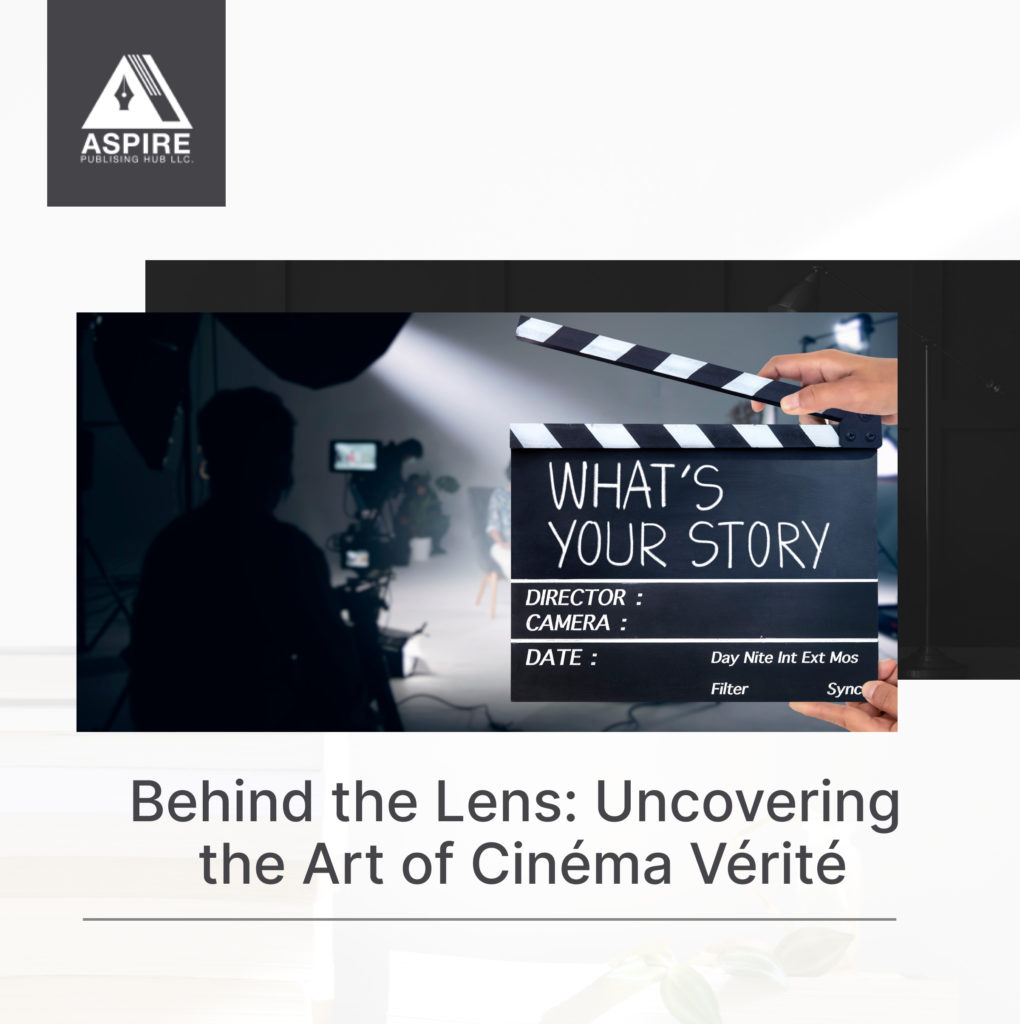Cinéma Vérité, or “truthful cinema,” is a unique form of documentary filmmaking that has existed since the 1960s. Its style captures real-life events and situations as they unfold, without interference or manipulation. While it may seem simple on the surface, this approach to filmmaking requires tremendous skill and creativity to capture the moment’s essence truly.
From the importance of building trust with your subjects to the art of capturing the perfect shot, we’ll uncover the secrets behind this fascinating and highly influential style of filmmaking. So if you’re a filmmaker, film buff, or just someone interested in exploring the world of documentary cinema, read on and discover the magic of Cinéma Vérité.
What is Cinéma Vérité?
Cinéma Vérité is a form of documentary filmmaking that emphasizes authenticity and realism. The approach is to capture real-life events and situations without scripting or staging. This technique relies on the filmmaker’s ability to be in the right place at the right time, with the camera rolling. The goal is to present an unbiased view of reality, allowing viewers to conclude based on what they see.
The History of Cinéma Verité
Cinéma Vérité emerged in the 1960s as a response to the traditional documentary filmmaking techniques of the time. Filmmakers wanted to move away from the heavily scripted and staged documentaries that dominated the industry and create a more authentic portrayal of reality.
The French filmmaker Jean Rouch is often credited with coining Cinéma Vérité in the 1960s. Rouch was a pioneer in the field of ethnographic filmmaking and believed that the best way to capture reality was to immerse oneself in the subject matter.
Characteristics of Cinéma Vérité
The key characteristic of Cinéma Vérité is its emphasis on authenticity. Filmmakers using this technique strive to capture real-life situations and events as they unfold.
This approach requires high skill and creativity, as the filmmaker must anticipate the action and be in the right place at the right time. The result is a film presenting an unbiased view of reality, allowing the viewer to draw conclusions based on what they see.
Cinéma Vérité vs. Documentary Filmmaking
While Cinéma Vérité is a form of documentary filmmaking, it differs from traditional documentaries in several ways. Traditional documentaries often rely on interviews, narration, and scripted scenes to tell a story. Cinéma Vérité, on the other hand, relies on capturing real-life situations and events as they happen.
This approach creates a sense of authenticity that is difficult to replicate in traditional documentaries. Cinéma Vérité also tends to be more observational, allowing the subject matter to unfold independently without the filmmaker’s interference.
Famous Cinéma Vérité Films
Several famous films have used the Cinéma Vérité technique to great effect. One of the most famous examples is the 1960 film “Primary,” which follows the 1960 Wisconsin Democratic primary campaign between John F. Kennedy and Hubert Humphrey.
The film eschews traditional documentary techniques in favor of a more observational approach, capturing the events and personalities of the campaign as they unfold. Another famous example is the 1970 film “Gimme Shelter,” which documents the 1969 Rolling Stones tour culminating in the tragic Altamont Free Concert.
Techniques Used in Cinéma Vérité
Cinéma Vérité requires a unique set of techniques to be successful. Filmmakers using this technique must anticipate the action and be in the right place at the right time. They must also build trust with their subjects, allowing the action to unfold naturally without interference.
One technique often used in Cinéma Vérité is a handheld camera, which allows the filmmaker to move quickly and capture the action from different angles. Another technique is using natural lighting, which creates a sense of realism and authenticity.
Challenges of Cinéma Vérité Filmmaking
Cinéma Vérité filmmaking presents several challenges for the filmmaker. One of the biggest challenges is building trust with the subjects. Filmmakers must be able to establish a rapport with their subjects and convince them to allow the camera to capture their lives.
Another challenge is the unpredictable nature of the subject matter. Filmmakers must be able to anticipate the action and be in the right place at the right time to capture the most compelling footage. Finally, Cinéma Vérité often requires significant editing to create a cohesive narrative from the footage captured.
Cinéma Vérité in Modern Times
While Cinéma Vérité emerged in the 1960s, it remains a popular technique for documentary filmmakers today. The rise of digital technology has made it easier for filmmakers to capture high-quality footage in real-time, allowing for more authentic portrayals of reality.
The popularity of reality TV shows has also helped to bring the Cinéma Vérité technique to a wider audience, as viewers have become more accustomed to watching real-life situations unfold on camera.
Criticisms of Cinéma Vérité
Cinéma Vérité is not without its critics. Some argue that the technique is inherently biased, as the filmmaker must choose which events to capture and which to leave out. Others argue that the technique can be invasive, requiring the filmmaker to enter the subjects’ lives and capture their most intimate moments.
Finally, some argue that the technique can be manipulative, as the filmmaker can shape the film’s narrative through editing.
Conclusion
Cinéma Vérité is a unique form of documentary filmmaking emphasizing authenticity and realism. While it presents several challenges for the filmmaker, it also allows for a more authentic portrayal of reality. The technique has been used in several famous films and remains popular among documentary filmmakers today.
It will be interesting to see how Cinéma Vérité evolves as technology evolves and what new techniques and strategies emerge to capture real-life situations and events.



